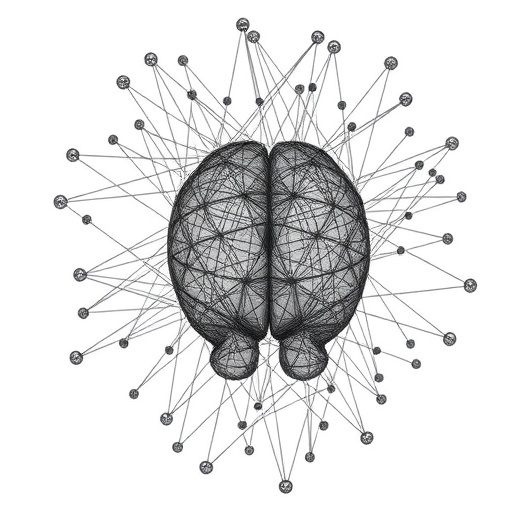In a groundbreaking development within the realm of artificial intelligence, researchers have introduced a novel framework called MMPNet, designed to refine multimodal sentiment analysis. Traditional sentiment analysis methods commonly operate on single modalities, whether textual, visual, or audio. However, in real-world scenarios, sentiments are often expressed through multiple modalities, making the need for a more holistic approach imperative. MMPNet seeks to bridge the interpretability gap in multimodal sentiment analysis by integrating temporal dynamics with modality-specific insights, ultimately enhancing the clarity and accuracy of sentiment classification.
At the heart of MMPNet’s innovation is its ability to extend the conventional modality-level interpretability. The landscape of sentiment analysis frequently underestimates the nuances involved in understanding not just what is said or shown, but when it is communicated. Temporal dynamics play a critical role in this context. For instance, the sentiment conveyed through a spoken phrase laden with emotional intonation may vary drastically based on the temporal context of preceding or succeeding phrases. Hence, the MMPNet framework incorporates a prototype-based architecture that allows for a dual-level interpretability, addressing both temporal patterns and cross-modal interactions that influence sentiment classification outcomes.
MMPNet is built on the established ProtoPNet framework, which has already made significant strides in the field of interpretable machine learning. By leveraging learned prototypes, MMPNet innovatively identifies crucial temporal segments within each modality while simultaneously evaluating the significance of various modalities in the overall sentiment prediction. This multifunctionality positions MMPNet as a powerful tool in both academic research and practical applications, such as improving customer sentiment understanding in marketing or enhancing emotional recognition in healthcare settings.
To validate its efficacy, MMPNet has undergone rigorous testing using the CMU-MOSI and CMU-MOSEI datasets—two benchmarks widely recognized in multimodal sentiment analysis research. The results have been striking, demonstrating that MMPNet not only achieves state-of-the-art performance but does so while maintaining interpretability and parameter efficiency. This balance is often a challenge within the field, where high-performing models can sacrifice interpretability on the altar of accuracy. MMPNet, however, paves a new avenue for researchers who seek both robustness and clarity in their sentiment analysis models.
Despite the promising outcomes, the researchers acknowledge various limitations that highlight avenues for future exploration. One significant drawback comes from the inherent complexity of temporal-multimodal data. Unlike its predecessor ProtoPNet, MMPNet is currently unable to generate reconstructed visualizations from its learned prototypes. Such visualizations are instrumental in understanding model decisions, and their absence signifies a critical area where MMPNet can expand. Future developments may focus on techniques for better visual representation of temporal data to enlighten users on how specific sentiments were derived.
Additionally, MMPNet is tailored primarily for classification tasks, which inherently limits its utility in regression scenarios often found in affective computing. Affective computing typically requires models that can predict continuous-valued outcomes rather than discrete sentiment classes. Consequently, future iterations of MMPNet will explore architectural modifications that would enable it to adapt to regression tasks without sacrificing its core interpretability.
In light of these findings, MMPNet stands out not only for its technical accomplishments but also for setting a precedent for future multimodal sentiment analysis systems. Its ability to interpret temporal influences and cross-modal interactions sheds light on how sentiments are formed and expressed, potentially revolutionizing the way machines understand human emotion. Researchers envision applications of MMPNet spanning various domains such as social media sentiment tracking, customer feedback analysis, and even real-time emotional assessments in virtual assistants.
As the field of artificial intelligence continues to evolve, the importance of interpretability cannot be overstated. Users of AI models must have access to clear insights regarding how decisions are made, particularly in sensitive areas such as sentiment analysis. MMPNet’s novel approach adds a vital dimension in this ongoing conversation. By understanding the underlying mechanisms that influence sentiment predictions, users can trust AI systems more fully, ensure ethical use, and engage better with technology that seems increasingly human.
In summary, the advent of MMPNet marks a significant milestone in multimodal sentiment analysis. While it primarily targets interpretability and performance within classification tasks, its design lays the groundwork for future models that could encompass an even wider array of modalities and predictive tasks. Researchers are enthusiastic about the potential implications of MMPNet, as it could lead to deeper insights into emotional sentiment across various sectors.
As MMPNet moves forward, interdisciplinary collaboration will be paramount to address its limitations and explore new possibilities. The intersection of AI and human emotion offers a rich field for exploration, as researchers, psychologists, and data scientists converge to deepen our understanding of sentiment and its implications in a technologically driven world.
With growing interest in AI and its applications, MMPNet can serve as a catalyst to inspire further innovation in interpretability within machine learning. As the framework evolves, it is set to pave the way for advancements that prioritize not just performance metrics but the very principles of transparency and user-centric design.
Thus, the future of sentiment analysis, illuminated by frameworks like MMPNet, promises to be more nuanced, contextually aware, and fundamentally human-centric, bridging the gap between machine learning and the emotional fabric of our society.
Subject of Research: Multimodal Sentiment Analysis
Article Title: Multimodal Prototypical Network for Interpretable Sentiment Classification
Article References:
Song, C., Chao, K., Jia, B. et al. Multimodal prototypical network for interpretable sentiment classification.
Sci Rep 15, 32939 (2025). https://doi.org/10.1038/s41598-025-19850-6
Image Credits: AI Generated
DOI: 10.1038/s41598-025-19850-6
Keywords: Multimodal Analysis, Sentiment Classification, Interpretability, Temporal Dynamics, Machine Learning, ProtoPNet, Affective Computing, Artificial Intelligence.




